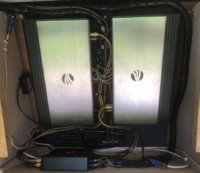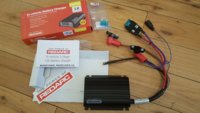Hi
My TSI Highline has a 180 amp (I think) alternator, but due to my planned audio upgrade I'm thinking it might be wise to increase it to a 250 amp one. How straightforward is this? Where can I get one etc?
The standard alternator is already powering two 4 channel amps that give 970 RMS watts which the van is handling fine (volts drop to around 13.2v), however, I plan to add a sub with another amp that will increase the load by 800 RMS watts at times, so worse case it will be 1770 RMS watts, and that isn't even allowing for what is lost in heat. The current 2 amps are class A/B so will be pulling around 1500 watts at times, the sub amp is class D, so probably 2500 watts total (192 amps at 13 volts) the alternator needs to supply plus all the regular stuff, so a 250 amp alternator should just do it.
My TSI Highline has a 180 amp (I think) alternator, but due to my planned audio upgrade I'm thinking it might be wise to increase it to a 250 amp one. How straightforward is this? Where can I get one etc?
The standard alternator is already powering two 4 channel amps that give 970 RMS watts which the van is handling fine (volts drop to around 13.2v), however, I plan to add a sub with another amp that will increase the load by 800 RMS watts at times, so worse case it will be 1770 RMS watts, and that isn't even allowing for what is lost in heat. The current 2 amps are class A/B so will be pulling around 1500 watts at times, the sub amp is class D, so probably 2500 watts total (192 amps at 13 volts) the alternator needs to supply plus all the regular stuff, so a 250 amp alternator should just do it.




